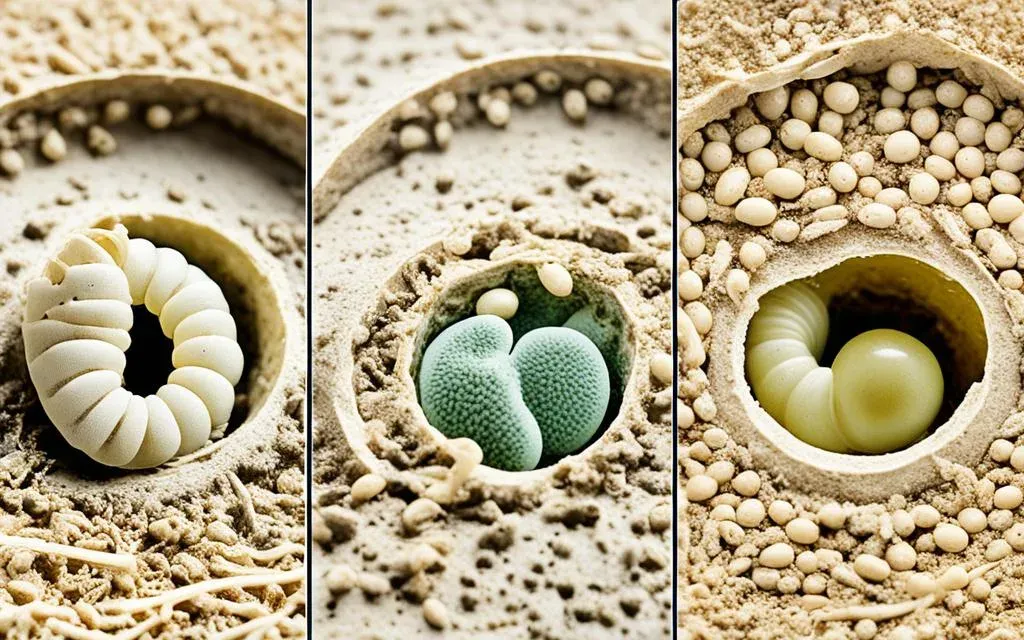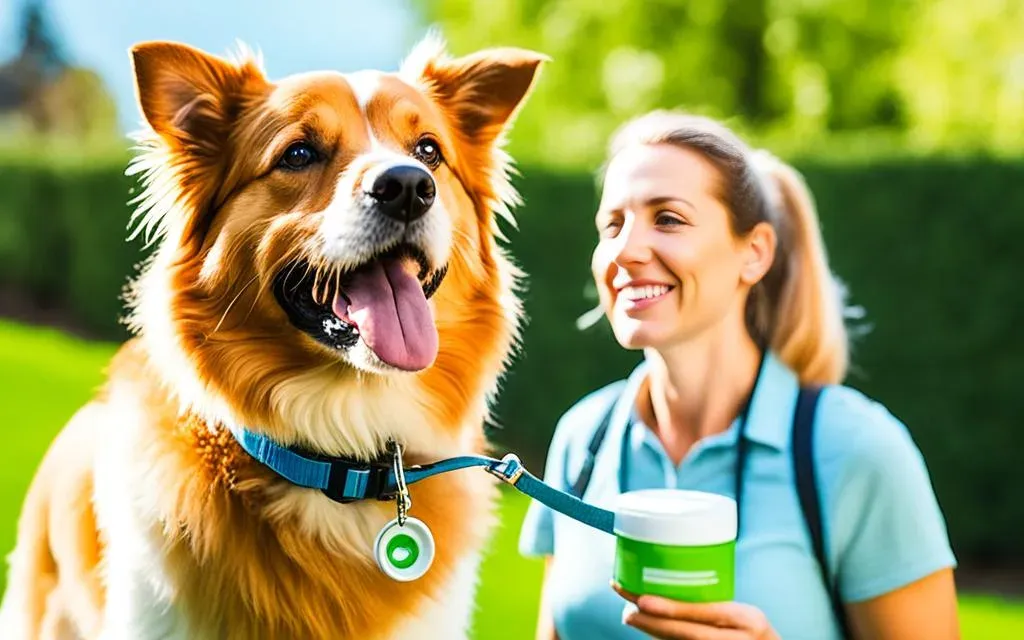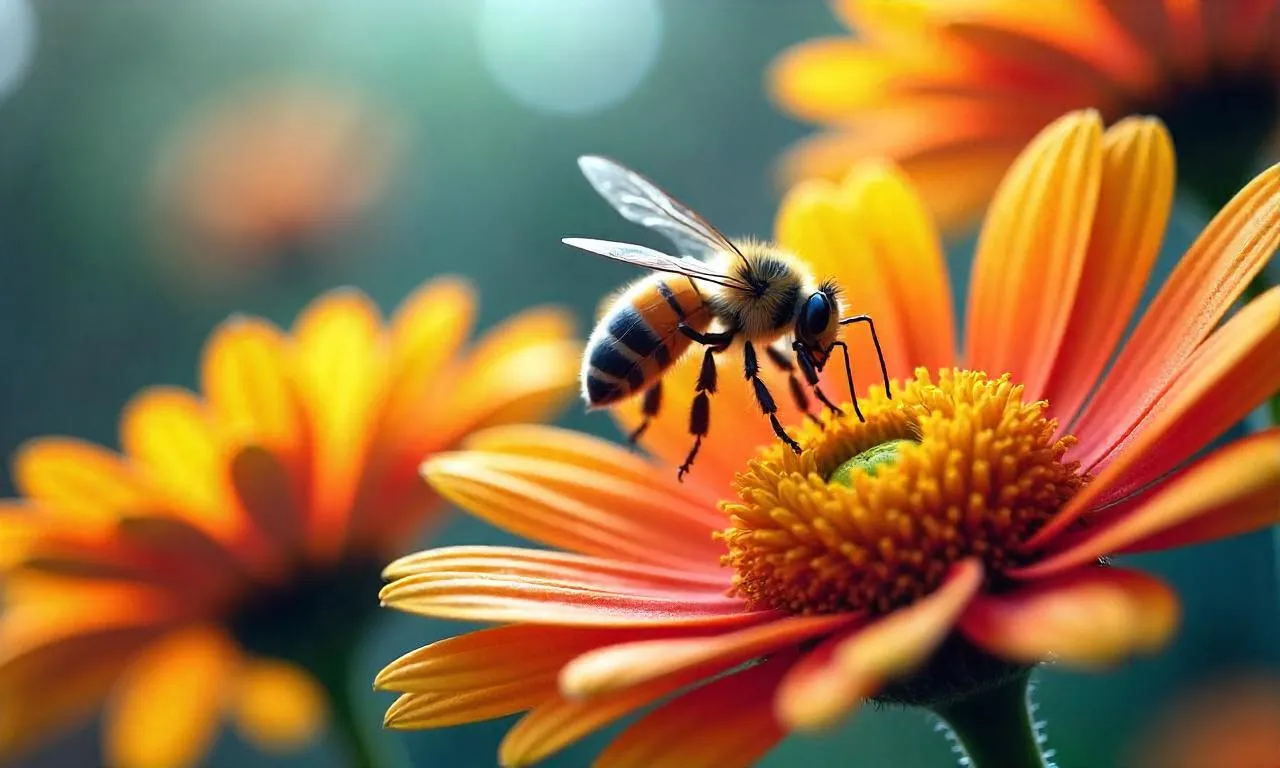As a responsible pet owner, I always put my dog’s health first. Keeping my dog safe from hookworms is a big concern. These tiny parasites can cause serious health issues, like anemia and breathing problems, and can even spread to humans1. That’s why I focus on preventing hookworms in my dog.
Hookworms are a big threat to dogs, especially puppies. They can be up to 20 millimeters long and live in a dog’s gut for a year or more1. Puppies are very vulnerable, facing risks like anemia and breathing issues if not treated1. Even adult dogs can get sick if they’re stressed or not eating well1.
Keeping my dog safe from hookworms is crucial. By being careful, following a good prevention plan, and keeping things clean, I can protect my dog and keep them healthy12.
Table of Contents
ToggleWhat Are Hookworms?
Hookworms, also known as Ancylostoma spp., are tiny worms that live in the intestines of dogs and cats3. They start their life cycle by laying eggs in the environment through an infected animal’s feces3. These eggs then hatch into larvae that can enter the dog’s body through the skin or by being swallowed4.
Hookworm Life Cycle
The life of a hookworm goes through several stages, including eggs, larvae, and adults4. Eggs from the host turn into larvae and can infect the dog by penetrating the skin or by being eaten4. Inside the host, these larvae grow into adult hookworms. They then stick to the intestines and feed on the dog’s blood4.
Hookworm Anatomy
Adult hookworms are tiny, measuring 10-20 millimeters long3. They have a special hook-like mouth that helps them attach to the intestinal wall of their host4. There are three main types of hookworms that can infect dogs: Ancylostoma caninum, Ancylostoma brazilense, and Uncinaria stenocephala3.
How Do Dogs Get Hookworms?
Dogs can get hookworms in several ways. It’s important to know how they spread to prevent it. Hookworms thrive in moist, warm places where pets can pick them up if the area isn’t cleaned well5. Dogs can get infected through skin contact, eating contaminated things, getting it from their mom, or through her milk5.
Skin Penetration
Hookworm larvae can go through a dog’s skin and move to the small intestine. This happens often in dirty places or where dogs aren’t cleaned up after5.
Oral Ingestion
Dogs can also get infected by eating contaminated soil, poop, or small animals that carry the larvae5. After that, the larvae turn into adult hookworms inside the dog’s intestines6.
Vertical Transmission
Newborn puppies are very likely to get hookworms from their mom’s milk or even before they’re born5. It’s important to deworm the mom dog and her puppies to stop this6.
Knowing how dogs can get hookworms helps us protect them. It’s key for keeping our dogs safe567.
Signs and Symptoms of Hookworms in Dogs
Hookworms can infect dogs of all ages, but puppies and older dogs are more likely to show symptoms8. Dogs may have bloody or black, tarry diarrhea, poor appetite, and anemia89. They might also have poor growth, a bad coat, and trouble breathing89.
In severe cases, hookworms can cause fatal blood loss8. Adult dogs might not show signs, but a fecal exam can detect them8. Dogs with hookworms may have a dull coat, cough, be weak, have pale gums, lose weight, not grow well, and have skin problems9.
Puppies are especially at risk of serious hookworm infections9. Quick diagnosis and treatment are key to prevent deadly outcomes, especially in young dogs9.
| Hookworm Symptoms in Dogs | Description |
|---|---|
| Bloody or Black, Tarry Diarrhea | A common sign of hookworm infestation, caused by the worms’ blood-feeding habits. |
| Poor Appetite | Hookworms can cause a decrease in appetite, leading to weight loss and poor growth. |
| Anemia | Severe hookworm infections can result in significant blood loss, leading to anemia. |
| Respiratory Issues | Coughing and other respiratory symptoms may occur due to the migration of hookworm larvae. |
| Dry, Dull Coat | Hookworm infections can contribute to a dog’s poor coat condition and appearance. |
Not all dogs with hookworms will show signs8. Sometimes, a few hookworms won’t cause any visible symptoms in dogs8. Regular deworming and prevention are key to keeping your dog healthy and avoiding hookworm problems89.
Diagnosing Hookworm Infections
It’s vital to accurately diagnose hookworm infections in dogs for proper treatment and prevention. The main way to find hookworms is through a fecal exam done by a vet10. This test looks at a stool sample under a microscope for hookworm eggs. These eggs show up about two to three weeks after the dog gets infected11.
Fecal Examination
The fecal floatation test is the best method to spot hookworms in dogs11. It helps vets see hookworm eggs. This confirms the infection and helps plan the right treatment10.
Testing Frequency
The CAPC suggests testing puppies for hookworms four times in their first year12. Adult dogs should get tested twice a year, based on their health and lifestyle12. Regular checks help catch hookworm infections early, preventing serious problems.
| Test | Frequency | Purpose |
|---|---|---|
| Fecal Examination | Puppies: 4 times in first year Adult Dogs: 2 times per year |
Detect hookworm eggs and confirm diagnosis |
By sticking to these guidelines and consulting with a vet, dog owners can keep their pets checked for hookworms12. Catching infections early and treating them is crucial to avoid serious health issues101211.
Dangers of Hookworm Infections
Hookworm infections in dogs can be very dangerous. These parasites feed on the dog’s blood, causing anemia and even death, especially in young puppies. Dogs can lose a lot of blood to a single hookworm, which can be fatal13.
Blood Loss
Hookworms cause serious blood loss in dogs. Ancylostoma Caninum is a common type of hookworm13. These parasites attach to the intestines and keep feeding on the dog’s blood. This can lead to severe anemia, especially in puppies with weak immune systems13.
Zoonotic Potential
Hookworms can infect both dogs and humans. Humans can get infected by touching contaminated soil or feces, leading to a skin infection called cutaneous larva migrans14. This infection is dangerous for small children and can cause blindness if it reaches the eyes14.
Hookworms are a threat to both dogs and humans. It’s important to treat and prevent these infections to keep pets and their owners safe14.

Hookworm infections in dogs are very dangerous. They can cause severe blood loss, anemia, and can even spread to humans. It’s crucial to understand the risks and take steps to prevent and treat these infections. This is key for the health and safety of dogs and their human families131415.
How to Prevent Hookworms in Dogs
Keeping your dog safe from hookworms is key to their health. As a caring pet owner, you can take steps to shield your dog from these harmful worms16.
Start by giving your dog a monthly parasite control medicine all year, as advised by your vet. This treatment helps prevent and treat hookworms, so you might not need extra deworming17.
- Puppies need hookworm treatment at 2, 4, 6, and 8 weeks old. They are very likely to get infected17.
- Check your dog’s poop 2 to 4 times in the first year and once or twice a year after that. This helps catch and track hookworm infections17.
Keeping your dog’s living area clean is also key. Make sure to clean up and throw away their poop right away to stop hookworm larvae from spreading18.
Be careful when taking your dog to places they don’t usually go, like dog boarding or new parks. Hookworms can spread through dirty soil or surfaces. Talk to your vet for tips on keeping your pet safe18.
For more info on hookworms and how to handle them, check out the Companion Animal Parasite Council (CAPC) at https://www.capcvet.org/guidelines/hookworms/17.
Treatment Options for Hookworms
If your dog tests positive for hookworms, your vet will likely give them a deworming medicine19. But, this medicine won’t get rid of the hidden larvae in your dog’s muscles. So, you might need another treatment to fully get rid of them19.
Deworming Medications
Medicines like fenbendazole, pyrantel pamoate, or moxidectin are often used to treat hookworms in dogs8. These drugs stop the worms from working properly or paralyze them, helping them leave the dog’s body6. Your dog might need more treatments to get rid of all the hookworm life stages19.
Supportive Care
If the hookworm problem is severe, your dog might need extra care to deal with blood loss and anemia8. This could mean fluids, iron supplements, a diet high in protein, and sometimes blood transfusions8. This care helps your dog get back to full strength faster6.
Dealing with hookworms in dogs requires both deworming and supportive care8. By working with your vet, you can make sure your dog gets the right treatment and support to beat this infection6.
Environmental Control and Hygiene
Keeping the environment clean is key to stopping hookworms from spreading and coming back in dogs. A big step is to quickly remove and dispose of dog feces. This is because hookworm eggs get into the environment through feces20.
Prompt Feces Removal
Cleaning up dog waste often is a must. Hookworm eggs can live and turn into larvae in the soil, threatening dogs and humans20. Managing feces well can slow down the spread of hookworms21.
Kennel Sanitation
Not just feces removal, but also keeping the dog’s living and boarding places clean and germ-free is crucial. This stops hookworm larvae and prevents more infections20. Kennels near soil and grass in warm weather are more likely to have hookworms21.
By keeping things clean and hygienic, pet owners can lower the risk of hookworms. This helps keep their dogs safe from these harmful worms.
Preventive Measures for Puppies
Puppies need extra care to avoid puppy hookworm prevention. Owners must be vigilant. The Companion Animal Parasite Council (CAPC) suggests treating puppies for hookworms at 2, 4, 6, and 8 weeks old22. It’s also important to deworm nursing mothers to stop hookworms from passing to puppies through milk22.
Hookworms are a big problem for dogs, with Ancylostoma caninum and Uncinaria stenocephala being the main culprits23. Young puppies are very likely to get badly infected and could even die if not treated23. They can get hookworms by eating larvae from dirty soil, through skin wounds, or from an infected mom during nursing23.
To keep young dogs safe from hookworms, we need a strong plan. Deworming regularly, keeping the area clean, and staying clean are key parts of responsible pet ownership. These steps help protect puppies and keep them healthy and happy.
Conclusion
Reflecting on the key insights about hookworms in dogs, some important points stand out. Hookworms are a big threat to dogs, especially young puppies. They can cause severe anemia and even death if not treated24.
The South has more hookworm cases in dogs and dog parks than other areas25. To protect our pets, regular vet visits, deworming, and cleanliness are key25. New treatments and tests have helped, but we must watch out for drug resistance26.
By knowing how hookworms spread and their dangers, we can protect our dogs. This knowledge helps us keep our dogs safe and healthy2524.
In conclusion, summary, key takeaways, final thoughts are clear. Hookworms are a big worry, but with the right knowledge and actions, we can keep our dogs safe and healthy2524.
FAQ
What are hookworms and how can they affect dogs?
Hookworms are tiny parasites that live in a dog’s intestines and feed on their blood. This can cause anemia, blood loss, and serious health problems. They can also infect humans, making them a risk to both pets and people.
How do dogs contract hookworms?
Dogs get hookworms through their skin, eating contaminated soil, or from their mother before birth. Puppies are especially likely to get infected.
What are the common symptoms of hookworm infection in dogs?
Dogs with hookworms may have bloody stool, poor appetite, and look unhealthy. They might not grow well or have a good coat. Young dogs can also have anemia and breathing problems. Adult dogs might not show any signs.
How are hookworm infections diagnosed in dogs?
To find hookworms, a vet must do a fecal exam. They look for hookworm eggs in a stool sample under a microscope.
What are the dangers of hookworm infections in dogs?
Hookworms can cause serious anemia and blood loss, which can be deadly, especially in puppies. They can also infect humans, making them a health risk to both pets and people.
How can I prevent hookworms in my dog?
To keep dogs safe from hookworms, use parasite control medicine all year, clean up dog waste quickly, and keep areas clean. Regular vet visits and deworming are also key.
How are hookworm infections in dogs treated?
If a dog has hookworms, a vet will give them medicine to kill the worms. In bad cases, they might need extra care to help with blood loss and anemia.
How can I control the environment to prevent the spread of hookworms?
Keep your dog’s area clean by removing waste quickly and disinfecting often. This helps get rid of hookworm larvae and stops more infections.
What special considerations are there for preventing hookworms in puppies?
Puppies are very likely to get hookworms. The CAPC suggests treating them at 2, 4, 6, and 8 weeks old with deworming medicine. Also, treat nursing mothers to stop the worms from passing to puppies.
Source Links
- https://be.chewy.com/how-to-treat-and-prevent-hookworms-in-dogs/
- https://www.akc.org/expert-advice/health/understanding-hookworms-in-dogs/
- https://heartgard.com/hookworms
- https://www.newhopeanimalhospital.com/site/blog/2023/04/30/hookworm-dogs
- https://www.belmarinanimalhospital.com/site/blog/2023/02/15/hookworm-dogs-signs-treatment
- https://www.fergusonanimalhospital.com/site/blog/2023/10/30/hookworm-dogs-signs-treatment
- https://www.montecitopethospital.com/site/blog/2023/12/15/hookworm-dogs
- https://nexgard.com.au/dog-parasites/worms/hookworms-in-dogs
- https://www.crossroadsvh.com/site/blog/2024/01/15/hookworm-dogs-signs-treatment
- https://www.amcveterinarian.com/site/blog/2024/03/15/hookworm-dogs
- https://vcahospitals.com/know-your-pet/hookworm-infection-in-dogs
- https://www.petmd.com/dog/conditions/infectious-parasitic/c_multi_ancylostomiasis
- https://www.smalldoorvet.com/learning-center/medical/hookworms-in-dogs
- https://www.webmd.com/a-to-z-guides/hookworm-infection
- https://www.thedrakecenter.com/resources/materials/dogs/canine-hookworm-infection
- https://www.akcchf.org/canine-health/top-health-concerns/current-topics-in-infectious-disease/Hookworms-Fact-Sheet-for-Dog-Owners.pdf
- https://www.petsandparasites.org/dog-owners/hookworms/
- https://www.midwayvetlovesmypet.com/site/blog/2023/12/15/hookworm-dogs-signs-treatment
- https://www.merckvetmanual.com/digestive-system/gastrointestinal-parasites-of-small-animals/hookworms-in-small-animals
- https://capcvet.org/guidelines/hookworms/
- https://vet.uga.edu/handling-hookworms/
- https://www.fineanimalhospital.com/site/blog/2023/04/23/hookworms-dogs–signs-treatment-prevention
- https://www.wellesleynatickveterinaryhospital.com/site/blog/2024/06/15/hookworm-dogs
- https://www.marvistavet.com/hookworms.pml
- https://tailsntummies.com/blogs/education/dog-hookworms?srsltid=AfmBOoo9L_etWcx7nkhXkwuC5UpD7cuDt23T6U4ctNSekZ7wwGiu593t
- https://www.ncbi.nlm.nih.gov/pmc/articles/PMC10031793/
















